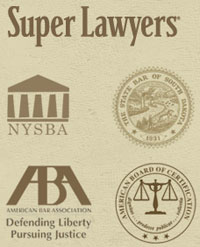Bankruptcy in the Bakken
Oil and gas production is a result of two basic factors: economics and technology. Economics means the costs of production and distribution. The price of oil is an essential element of the economics of production. One economic risk is bankruptcy. A bankruptcy filing, however, is not the same as a “funeral.” People believe what they want to believe. When I taught bankruptcy law, one of the harder things to get across to the students was the fact that a bankruptcy filing is not automatically “the end.” Nevertheless, several of the law students still came into the class carrying that attitude. One should keep in mind that even if a liquidation bankruptcy case is filed, production in the final analysis often continues. The particular chapter of the bankruptcy code filing, North Dakota property law, as well as state and federal regulations all affect a bankruptcy case. There are as many facets to a bankruptcy case as there are facets on a movie star’s wedding ring, however, in this article I will discuss basically the impact of a bankruptcy filing on the typical lessor and royalty holder.
First let us review a couple of things to watch for concerning a possible bankruptcy filing. If you are the lessor or royalty holder and think a producer may be a bankruptcy candidate, there are steps that can be taken. Your attorney can access the so-called watch list as well as access public records for delisted public companies. And a slow, or no, payment of royalties is also a red flag. But do not panic if a bankruptcy filing occurs. The royalty holder should put his energy into keeping good paperwork and records. This will make a bankruptcy experience tolerable.
Property rights created by an oil and gas lease are treated differently in the various states. In North Dakota, the oil and gas lease gives the lessor a real property interest with real property rights. According to the 1986 North Dakota Supreme Court case Nantt v. Puckett Energy Company, “[o]il and gas leases are interests in real property” and have been considered such since 1951. Although an oil and gas lease is not a lease in a landlord and tenant sense, in North Dakota, an operating lease is treated under bankruptcy law as an “unexpired lease.” In Van Sickles v. Hallmark & Associates, a 2013 case, the North Dakota Supreme Court decided that an oil and gas lease in a bankruptcy case must comply with the requirements set forth in section 365 of the bankruptcy code.
Many operators who file bankruptcy are in arrears on royalty payments. A new law goes into effect at the end of February in North Dakota that allows a royalty holder to file a security lien when the royalty has not been paid when due. The royalty owner must file the lien with the state and record the lien in the county where the well is located within 90 days of production to have a lien. With good records and timely filing and recording, mineral interest owners can gain a secured position in a bankruptcy proceeding. This greatly increases a royalty holder’s chances of a full recovery because secured creditors are paid before unsecured creditors.
In bankruptcy, the debtor must either assume or reject an unexpired lease of the debtor. A debtor may not accept only the favorable parts of an executory contract. If the lease is assumed and not in default, the royalty holder can rest easy, because an oil and gas lease must be assumed in full. The royalty owner will continue to reap the benefits of the contract. If the lease is in default, the debtor must cure the default in order to keep the lease. Therefore, if a bankrupt debtor is delinquent on royalty payments, the debtor must pay the back royalties if they want to assume the lease. Either way, the royalty owner gets paid, at least eventually. However, the bankruptcy court must approve any assumption of a lease. In this circumstances, the court will look to whether the lease is a valuable asset to the debtor and whether its preservation is sufficiently important. A royalty holder or lessor may also request that the court order the debtor to decide whether to assume or reject the lease within a specified period of time. A bankruptcy court can rule that preventing further delay with respect to assumption or rejection is in the best interest of all the parties.
Following a bankruptcy, a royalty holder or lessor may find themselves with the new option of leasing to a different producer. If a debtor elects to reject an oil and gas lease, the lease is no longer valid and the mineral interest is again available on the open market. Another way this could happen is if a producer is in default of the lease agreement. The North Dakota legislature states in N.D.C.C. Sec. 47-16-39.1 that the obligation to pay royalties is “of the essence” in an oil and gas lease and that breach of the obligation “may constitute grounds for cancellation of the lease.” If a mineral owner shows a bankruptcy court that equity requires it, the court may cancel the contract and the mineral owner may then lease to another party. In addition to the statute, some lease agreements contain a provision allowing a landowner to terminate the lease under certain conditions. This avoids the equity power of the court in favor of contract language regarding cancellation. If the terms of the lease are breached in this way, a landowner may be able to terminate the existing lease and sign a lease with another producer.





